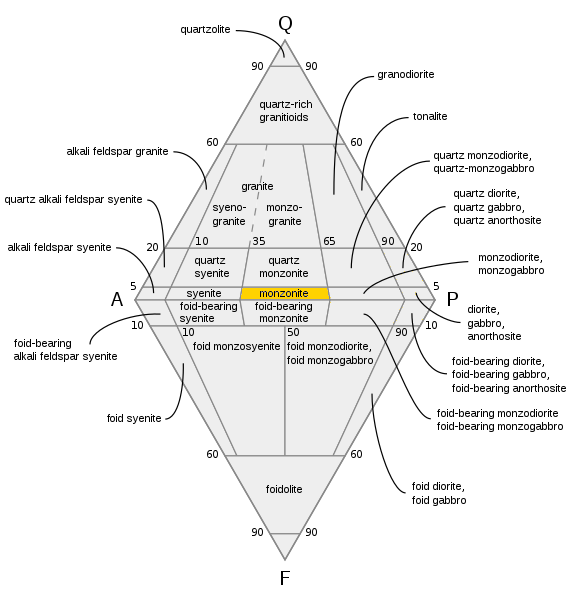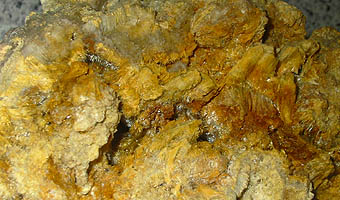|
Merisi Mining District
The Merisi Mining District is situated in Adjara region in close vicinity to the Georgian-Turkish border. It is the part of Lesser Caucasus which occurs in the hinterland of the Arabia-Eurasia collision zone, in the broad Alpine- Himalayan orogenic belt. Area of the mining district is about 180 km2. Minerals The district contains several copper-polymetallic, copper-porphyry and stratified sulphuric pyrite deposits and ore manifestations. Some of deposits of the Merisi mining district is represented mainly with chalcopyrite and with subordinate lead-zinc deposits with minor copper. The second order minerals are marcasite, hematite, malachite, azurite, native gold and silver. The modern exploration data demonstrate commercial gold presence in quartz-sericite-chlorite and quartz-alunite rocks in close vicinity to the hydrothermal polymetallic veins. The central part of the mining district is occupied by outcrops of the Merisi-Namonastrevi-Chalati subalkaline diorite-syenite-monz ... [...More Info...] [...Related Items...] OR: [Wikipedia] [Google] [Baidu] |
Adjara
Adjara ( ka, აჭარა ''Ach’ara'' ) or Achara, officially known as the Autonomous Republic of Adjara ( ka, აჭარის ავტონომიური რესპუბლიკა ''Ach’aris Avt’onomiuri Resp’ublik’a'' ), is a political-administrative region of Georgia. Located in the country's southwestern corner, Adjara lies on the coast of the Black Sea near the foot of the Lesser Caucasus Mountains, north of Turkey. It is an important tourist destination and includes Georgia's second most populous city of Batumi as its capital. About 350,000 people live on its . Adjara is home to the Adjarians, a regional subgroup of Georgians. The name can be spelled in a number of ways, including ''Ajara'', ''Ajaria'', ''Adjaria'', ''Adzharia'', ''Atchara'' and ''Achara''. Under the Soviet Union, Adjara was part of the Georgian Soviet Socialist Republic as the Adjarian ASSR. The autonomous status of Adjara is guaranteed under article 6 of the Treaty of Kars. H ... [...More Info...] [...Related Items...] OR: [Wikipedia] [Google] [Baidu] |
Marcasite
The mineral marcasite, sometimes called “white iron pyrite”, is iron sulfide (FeS2) with orthorhombic crystal structure. It is physically and crystallographically distinct from pyrite, which is iron sulfide with cubic crystal structure. Both structures do have in common that they contain the disulfide S22− ion, having a short bonding distance between the sulfur atoms. The structures differ in how these di-anions are arranged around the Fe2+ cations. Marcasite is lighter and more brittle than pyrite. Specimens of marcasite often crumble and break up due to the unstable crystal structure. On fresh surfaces, it is pale yellow to almost white and has a bright metallic luster. It tarnishes to a yellowish or brownish color and gives a black streak. It is a brittle material that cannot be scratched with a knife. The thin, flat, tabular crystals, when joined in groups, are called “cockscombs”. In marcasite jewellery, pyrite used as a gemstone is called “marcasite” – t ... [...More Info...] [...Related Items...] OR: [Wikipedia] [Google] [Baidu] |
Monzonite
Monzonite is an igneous intrusive rock, formed by slow cooling of underground magma that has a moderate silica content and is enriched in alkali metal oxides. Monzonite is composed mostly of plagioclase and alkali feldspar. Syenodiorite is an obsolescent term for monzonite or for monzodiorite.Le Maitre, R.W., ''Igneous Rocks: A Classification and Glossary of Terms'' Cambridge University Press, 2nd ed, pp. 113 Larvikite is a particular form of monzonite. Description Monzonite is a coarse-grained (phaneritic) igneous rock. Such rocks are classified by their relative percentages of quartz, plagioclase, alkali feldspar, and feldspathoid (the QAPF classification). Monzonite is defined as rock having less than 5% quartz in its QAPF fraction and in which alkali feldspar makes up between 35% and 65% of the total feldspar content. If quartz constitutes greater than 5% of the QAPF fraction, the rock is termed a quartz monzonite, while if feldspathoids are present as up to 10% of the ... [...More Info...] [...Related Items...] OR: [Wikipedia] [Google] [Baidu] |
Syenite
Syenite is a coarse-grained intrusive igneous rock with a general composition similar to that of granite, but deficient in quartz, which, if present at all, occurs in relatively small concentrations (< 5%). Some syenites contain larger proportions of components and smaller amounts of felsic material than most granites; those are classed as being of . The equivalent of syenite is |
Diorite
Diorite ( ) is an intrusive igneous rock formed by the slow cooling underground of magma (molten rock) that has a moderate content of silica and a relatively low content of alkali metals. It is intermediate in composition between low-silica (mafic) gabbro and high-silica ( felsic) granite. Diorite is found in mountain-building belts (''orogens'') on the margins of continents. It has the same composition as the fine-grained volcanic rock, andesite, which is also common in orogens. Diorite has been used since prehistoric times as decorative stone. It was used by the Akkadian Empire of Sargon of Akkad for funerary sculptures, and by many later civilizations for sculptures and building stone. Description Diorite is an intrusive igneous rock composed principally of the silicate minerals plagioclase feldspar (typically andesine), biotite, hornblende, and sometimes pyroxene. The chemical composition of diorite is intermediate, between that of mafic gabbro and felsic grani ... [...More Info...] [...Related Items...] OR: [Wikipedia] [Google] [Baidu] |
Vein (geology)
In geology, a vein is a distinct sheetlike body of crystallized minerals within a rock. Veins form when mineral constituents carried by an aqueous solution within the rock mass are deposited through precipitation. The hydraulic flow involved is usually due to hydrothermal circulation. Veins are classically thought of as being the ones in the body not the rock veins and arteries planar fractures in rocks, with the crystal growth occurring normal to the walls of the cavity, and the crystal protruding into open space. This certainly is the method for the formation of some veins. However, it is rare in geology for significant open space to remain open in large volumes of rock, especially several kilometers below the surface. Thus, there are two main mechanisms considered likely for the formation of veins: ''open-space filling'' and ''crack-seal growth''. Open space filling Open space filling is the hallmark of epithermal vein systems, such as a stockwork, in greisens or in cert ... [...More Info...] [...Related Items...] OR: [Wikipedia] [Google] [Baidu] |
Alunite
Alunite is a hydroxylated aluminium potassium sulfate mineral, formula K Al3( S O4)2(O H)6. It was first observed in the 15th century at Tolfa, near Rome, where it was mined for the manufacture of alum. First called ''aluminilite'' by J.C. Delamétherie in 1797, this name was contracted by François Beudant three decades later to alunite. Alunite crystals morphologically are rhombohedron, rhombohedra with interfacial angles of 90° 50', causing them to resemble cubes. Crystal symmetry is trigonal. Minute glistening crystals have also been found loose in cavities in altered rhyolite. Alunite varies in color from white to yellow gray. The hardness on the Mohs scale is 4 and the specific gravity is between 2.6 and 2.8. It is insoluble in water or weak acids, but soluble in sulfuric acid. Sodium can substitute for potassium in the mineral, and when the sodium content is high, is called natroalunite. Alunite is an analog of jarosite, where aluminium replaces Fe3+. Alunite o ... [...More Info...] [...Related Items...] OR: [Wikipedia] [Google] [Baidu] |
Chlorite Group
The chlorites are the group of phyllosilicate minerals common in low-grade metamorphic rocks and in altered igneous rocks. Greenschist, formed by metamorphism of basalt or other low-silica volcanic rock, typically contains significant amounts of chlorite. Chlorite minerals show a wide variety of compositions, in which magnesium, iron, aluminium, and silicon substitute for each other in the crystal structure. A complete solid solution series exists between the two most common end members, magnesium-rich clinochlore and iron-rich chamosite. In addition, manganese, zinc, lithium, and calcium species are known. The great range in composition results in considerable variation in physical, optical, and X-ray properties. Similarly, the range of chemical composition allows chlorite group minerals to exist over a wide range of temperature and pressure conditions. For this reason chlorite minerals are ubiquitous minerals within low and medium temperature metamorphic rocks, some igneous r ... [...More Info...] [...Related Items...] OR: [Wikipedia] [Google] [Baidu] |
Sericite
Sericite is the name given to very fine, ragged grains and aggregates of white (colourless) micas, typically made of muscovite, illite, or paragonite. Sericite is produced by the alteration of orthoclase or plagioclase feldspars in areas that have been subjected to hydrothermal alteration typically associated with copper, tin, or other hydrothermal ore deposits. Sericite also occurs as the fine mica that gives the sheen to phyllite and schistose metamorphic rocks. The name comes from Latin ''sericus'', meaning "silken" in reference to the location from which silk was first utilized, which in turn refers to the silky sheen of rocks with abundant sericite. File:Granite pmg ss 2006.jpg, Granite in thin section under cross-polarized light in which feldspar crystals exhibit sericite alteration. File:Staurolite garnet schist 3mm xp 2007.jpg, Staurolite-garnet schist in thin section under cross-polarized light with sericite. References External linksMindat [...More Info...] [...Related Items...] OR: [Wikipedia] [Google] [Baidu] |
Quartz
Quartz is a hard, crystalline mineral composed of silica (silicon dioxide). The atoms are linked in a continuous framework of SiO4 silicon-oxygen tetrahedra, with each oxygen being shared between two tetrahedra, giving an overall chemical formula of SiO2. Quartz is the second most abundant mineral in Earth's continental crust, behind feldspar. Quartz exists in two forms, the normal α-quartz and the high-temperature β-quartz, both of which are chiral. The transformation from α-quartz to β-quartz takes place abruptly at . Since the transformation is accompanied by a significant change in volume, it can easily induce microfracturing of ceramics or rocks passing through this temperature threshold. There are many different varieties of quartz, several of which are classified as gemstones. Since antiquity, varieties of quartz have been the most commonly used minerals in the making of jewelry and hardstone carvings, especially in Eurasia. Quartz is the mineral defining the val ... [...More Info...] [...Related Items...] OR: [Wikipedia] [Google] [Baidu] |
Silver
Silver is a chemical element with the Symbol (chemistry), symbol Ag (from the Latin ', derived from the Proto-Indo-European wikt:Reconstruction:Proto-Indo-European/h₂erǵ-, ''h₂erǵ'': "shiny" or "white") and atomic number 47. A soft, white, lustrous transition metal, it exhibits the highest electrical conductivity, thermal conductivity, and reflectivity of any metal. The metal is found in the Earth's crust in the pure, free elemental form ("native silver"), as an alloy with gold and other metals, and in minerals such as argentite and chlorargyrite. Most silver is produced as a byproduct of copper, gold, lead, and zinc Refining (metallurgy), refining. Silver has long been valued as a precious metal. Silver metal is used in many bullion coins, sometimes bimetallism, alongside gold: while it is more abundant than gold, it is much less abundant as a native metal. Its purity is typically measured on a per-mille basis; a 94%-pure alloy is described as "0.940 fine". As one of th ... [...More Info...] [...Related Items...] OR: [Wikipedia] [Google] [Baidu] |
Gold
Gold is a chemical element with the symbol Au (from la, aurum) and atomic number 79. This makes it one of the higher atomic number elements that occur naturally. It is a bright, slightly orange-yellow, dense, soft, malleable, and ductile metal in a pure form. Chemically, gold is a transition metal and a group 11 element. It is one of the least reactive chemical elements and is solid under standard conditions. Gold often occurs in free elemental ( native state), as nuggets or grains, in rocks, veins, and alluvial deposits. It occurs in a solid solution series with the native element silver (as electrum), naturally alloyed with other metals like copper and palladium, and mineral inclusions such as within pyrite. Less commonly, it occurs in minerals as gold compounds, often with tellurium (gold tellurides). Gold is resistant to most acids, though it does dissolve in aqua regia (a mixture of nitric acid and hydrochloric acid), forming a soluble tetrachloroaurate anion. Gold is ... [...More Info...] [...Related Items...] OR: [Wikipedia] [Google] [Baidu] |








